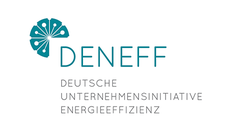Search eceee proceedings
Barriers to and decisions for energy efficiency: what do we know so far? A theoretical and empirical overview
Panel: 5. Business models, finance and investment in the age of digitalisation
This is a peer-reviewed paper.
Authors:
Stefan M. Büttner, University of Stuttgart, EEP – Institute for Energy Efficiency in Production, Germany
Werner König, Reutlingen University, Energy Center for Distributed Energy Systems and Energy Efficiency (REZ), Germany
Florian Bottner, Institute for Energy Efficiency in Production (EEP), Germany
Sabine Löbbe, Reutlingen University, Energy Center for Distributed Energy Systems and Energy Efficiency (REZ), Germany
Alexander Sauer, EEP – Institute for Energy Efficiency in Production, Germany
Abstract
To achieve any of the energy conservation and climate goals on national, European or global level, much more action is required in the field of energy efficiency (EE). To achieve this, barriers of various types need to be overcome and drivers for the decision to act on energy efficiency need to be identified and broadly applied.
Building on earlier findings, this paper empirically investigates the major barriers for EE and what characteristics may play a role in determining the perceived severity of barriers. Underpinned by data of 1,005 manufacturing companies gathered in context of the Energy Efficiency Index of the German Industry (EEI), the Institute for Energy Efficiency in Production (EEP) at the University of Stuttgart and Reutlingen University’s REZ explore the role of company size, energy productivity, and in comparison with qualitative studies also geography (Northern Italy) and type of intervention (market ready innovations) in relation to barriers to energy efficiency measures (EEM). Overcoming these barriers often subsequently requires action by the management.
How to trigger that subsequent action, the decision for energy efficiency and notably raising awareness for it, is being looked at in part two of the paper. As previous work indicates, having the staff’s support is beneficial in the context of energy efficiency. Exploring how and by whom awareness is risen in aforementioned companies brings to light that whilst a vast majority of companies do it, there are differences depending on size and energy productivity of a company and quite a clear reasoning is found why the majority of the remaining companies don’t raise staff awareness.
Downloads
Download this paper as pdf: 5-127-18_Buettner.pdf
Download this presentation as pdf: 5_127_18_Buettner_pres.pdf















